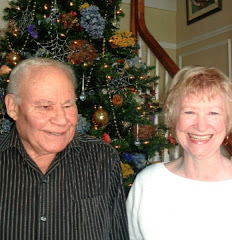
Those of us who spend hours, days, weeks, months, and years researching our families' histories run across these fakers all too often.
Anyone who truly wants to know his or her family's history does not accept as true any information that cannot be documented. It isn't enough to find glowing reports of famous ancestors on the Internet with entire family trees flung out for all to see and claim them as one's own. Being published in a book does not make anything true unless the author has sources. Information such as this is only a place to start.
The Internet, especially, has made genealogy research much easier. There are records on-line that formerly required lengthy correspondence and visits to county courthouses, history centers, graveyards, libraries, archives, and state capitols. The Internet also makes it possible to compare one's DNA to others who have agreed to such comparisons. Such records are valid and conclusive.
On the other hand, all too many so-called researchers are willing to throw a bunch of names onto a family tree with very little documentation and publish it on the Internet as gospel. These people contact you with statements and then disappear into the woodwork when you confuse them with facts. After you've spent your time responding to them, you never hear from them again. All you have is their e-mail address and every polite inquiry is met with stony silence.
I ran across two cousins who fall into this category a week or so ago. I received an e-mail that stated a male cousin's DNA matches that of my husband and asked what I thought about that. Since Carl's male ancestry has been impossible to prove conclusively due to a loss of records when a courthouse burned in the early 1900s, you can imagine how exciting this was. I immediately sent documentation of what we know and asked some pertinent questions. The response said, "Holy Cow, what a lot of information," but didn't answer any of my questions. I politely inquired again and got another inane reply with no answers. I asked when it would be convenient to call. No answer.
Then Cousin #2 responded with a supposed family tree that included a household where Carl's great-grandmother was living in 1850 (although Cousin #2 didn't know this until I told her). I sent more information and politely asked again about the DNA. I got another inane response: "Still trying to figure all this out. It's quite confusing. I'll let you know if I come up with anything." I responded with an offer to share information and point-blank asked why both women are reluctant to discuss the DNA that supposedly caused them to contact me in the first place. I pointed out that DNA is not confusing – it either matches or it doesn't. Silence. I wrote again to Cousin #1. Silence. On Sunday I left a message on the cell phone Cousin #1 supplied early on. No response. Neither person seems the least bit interested in the treasure trove of documented information I have about their so-called family – information that any serious researcher would never let get away.
So here I sit, wondering why in the world anyone would contact me and then decide to not talk to me about the very subject they brought up. Meanwhile, there are no such DNA matches on any of the collaborating Internet sites. I can only conclude that these two people sent out incorrect information and now don't have the common courtesy to say they made a mistake. At best, they are inexcusably rude and their family tree is a fake.
I have done them the favor of sending them the link to this blog in the hope they will learn something about what constitutes both good manners and valid research. I am not holding my breath.
P.S. Above is the back of a postcard sent by my great-uncle, Orlin Burns, during World War I. It documents that he was in the Army, his rank, and where he was on a particular day. I don't know who Mike and Emma were but you can bet I won't be filling in those blanks with guesses.




